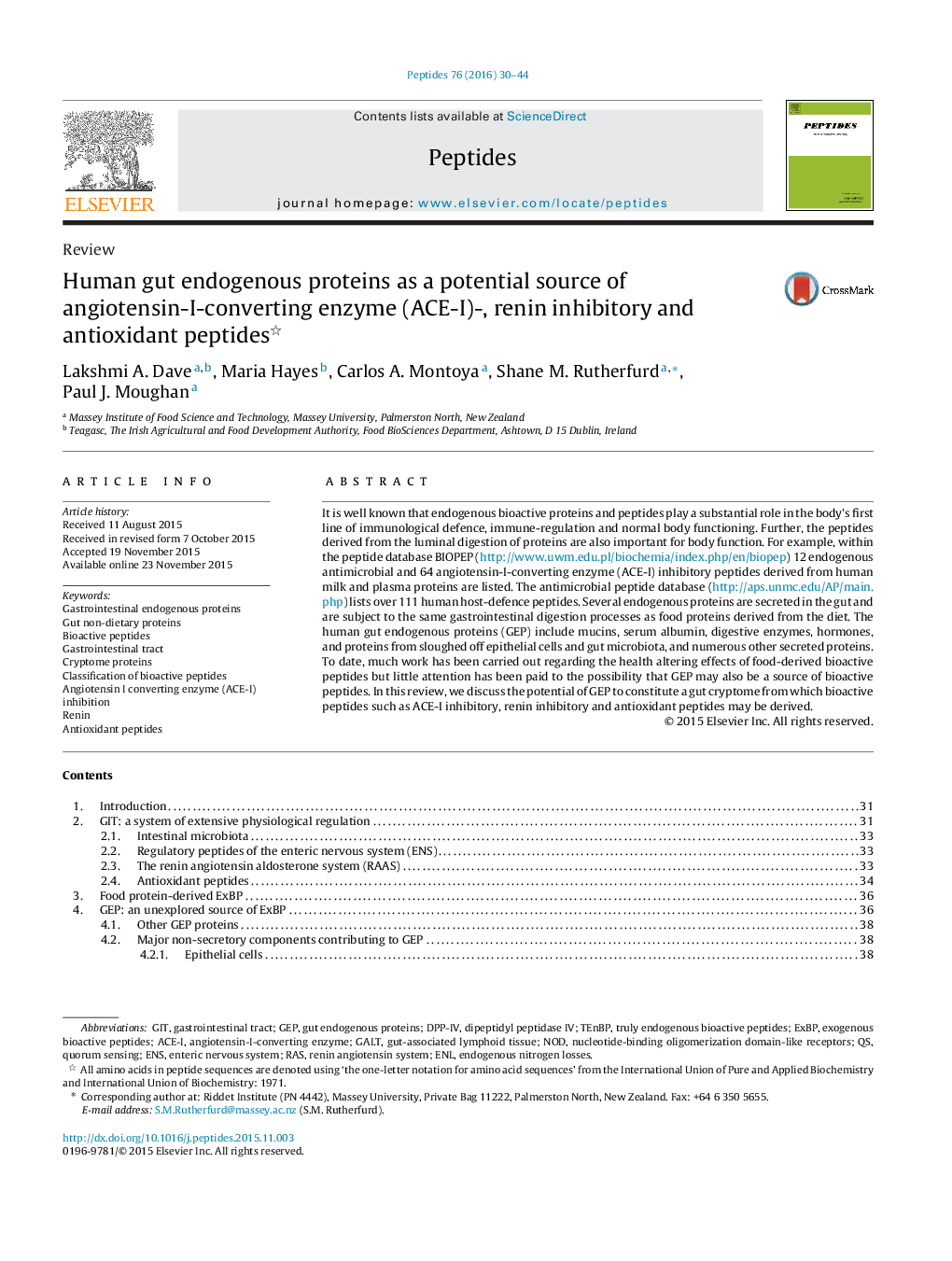| Article ID | Journal | Published Year | Pages | File Type |
|---|---|---|---|---|
| 2005920 | Peptides | 2016 | 15 Pages |
•The potential of gastrointestinal endogenous proteins (GEP) as a source of exogenous bioactive peptides in the gut lumen.•The major GEP that may give rise to bioactive peptides.•Clear classification of bioactive peptides based on their site of generation.•Brief description of the importance of bioactivity including ACE-I inhibitory, and antioxidant activity in the gastrointestinal tract.
It is well known that endogenous bioactive proteins and peptides play a substantial role in the body's first line of immunological defence, immune-regulation and normal body functioning. Further, the peptides derived from the luminal digestion of proteins are also important for body function. For example, within the peptide database BIOPEP (http://www.uwm.edu.pl/biochemia/index.php/en/biopep) 12 endogenous antimicrobial and 64 angiotensin-I-converting enzyme (ACE-I) inhibitory peptides derived from human milk and plasma proteins are listed. The antimicrobial peptide database (http://aps.unmc.edu/AP/main.php) lists over 111 human host-defence peptides. Several endogenous proteins are secreted in the gut and are subject to the same gastrointestinal digestion processes as food proteins derived from the diet. The human gut endogenous proteins (GEP) include mucins, serum albumin, digestive enzymes, hormones, and proteins from sloughed off epithelial cells and gut microbiota, and numerous other secreted proteins. To date, much work has been carried out regarding the health altering effects of food-derived bioactive peptides but little attention has been paid to the possibility that GEP may also be a source of bioactive peptides. In this review, we discuss the potential of GEP to constitute a gut cryptome from which bioactive peptides such as ACE-I inhibitory, renin inhibitory and antioxidant peptides may be derived.
